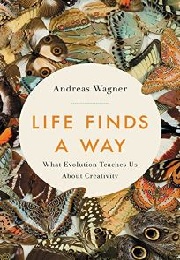Life Finds a Way: What evolution teaches us about creativity

By Andreas Wagner
One World, £18.99
This is a book from which I gained both scientific insights and the pleasure of an engaging literary style. For example, in two memorable metaphors the author suggests that ‘the genome of a multi-cellular organism resembles the workshop of an inventor, filled to the rafters with spare parts, tools, abandoned projects, disassembled machines and half-finished designs’, and that ‘play is to creativity what genetic drift is to evolution and heat to self-assembling molecules’.
Even so, the bold conjectures advanced should surely be exposed to Popperian ‘attempted refutation.’ Firstly, there is the question of whether creativity, generally understood as a property of the conscious mind, can meaningfully be applied to the deterministic nature of chemical interactions (or, indeed, ‘selfish genes.’). Then there is the matter of the definition of creative outcomes. In the context of biology this is ultimately assessed in terms of the survival of the fittest - and dependence, the author assumes, on cost-benefit criteria. But works of art, which are undoubtedly products of creative minds, are subject to no such objective criterion: for as Keats opined ‘beauty is truth’. Moreover, metaphor, that almost indispensable tool of epistemology, is subject to unintended misconstrual by both authors and readers.
However, some convergence of this polarisation of approaches might occur if both the realm of the subconscious and the notion of emergence, whereby physicochemical events elicit qualitatively different phenomena, are considered. In my view, the book makes an important contribution to the exploration of this fascinating intellectual hinterland.
Professor Ben Mepham FRSB


